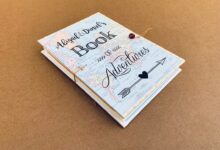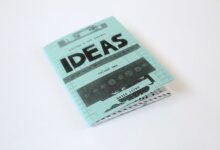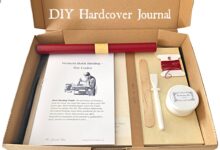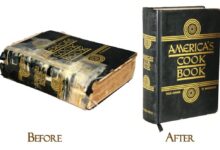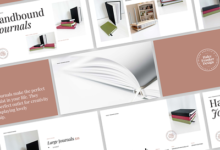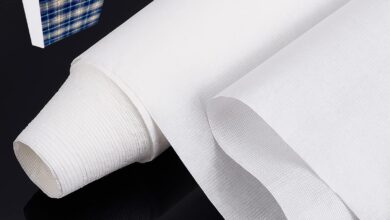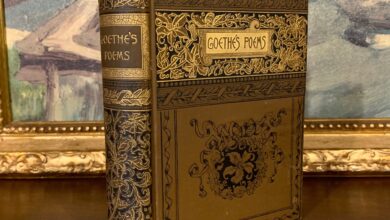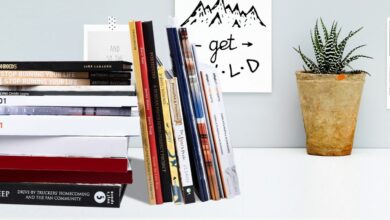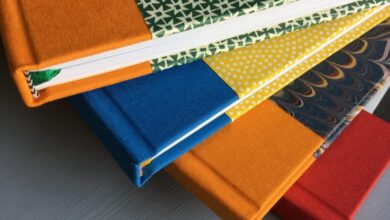From Page to Cover: Designing Stunning BookBinding Art
Bookbinding art is a rare form of creative art that has the power to transform any book from a mere reading instrument to a cherished work of art. This pleasant transformation of a book to a masterpiece is through designing its pages and cover with artistic elements such as illustrations, typography, color, and texture.
The art of bookbinding has evolved over the centuries from functional to artistic. The earliest books were hand-written and manuscripts, and only monks and other religious orders were the ones allowed to create them. The idea of binding and adding artistic touches to books started in the Middle Ages, and it has continued to evolve with time.
Here, we shall take you on an exciting journey, from page to cover, through the world of designing stunning bookbinding art. This article shall explore the strengths, weaknesses, and the practical side of bookbinding art. Not forgetting the most frequently asked questions ranging from the best materials for bookbinding to the costs involved. Enjoy the ride!
Contents
- 1 Strengths of BookBinding Art
- 2 Weaknesses of BookBinding Art
- 3 The Practical Side of BookBinding Art
- 4 Frequently Asked Questions
- 4.1 1) What are some of the materials required for bookbinding art?
- 4.2 2) What type of papers are best in bookbinding art?
- 4.3 3) Can bookbinding art be done with recycled materials?
- 4.4 4) Is bookbinding an expensive art/craft?
- 4.5 5) What are the different techniques of bookbinding?
- 4.6 6) What makes bookbinding art unique?
- 4.7 7) What is the best adhesive for bookbinding?
- 4.8 8) Can bookbinding art be done with digital books?
- 4.9 9) What is the lifespan of books with bookbinding art?
- 4.10 10) Can beginners create stunning books with bookbinding art?
- 4.11 11) Can I dedicate or gift a book I designed with bookbinding art to someone?
- 4.12 12) What are some of the famous bookbinding styles?
- 4.13 13) How can I learn bookbinding art?
- 5 Final Thoughts
Strengths of BookBinding Art
1) Design Flexibility: One of the pros of bookbinding art is that it offers limitless design flexibility. Bookbinding art provides an avenue to breathe life into your book. You can customize your books with the designs of your choice, apply different artistic techniques, and experiment with different textures, colors, typography, and patterns.
2) Longevity: Books designed with bookbinding art are made to last for a considerably longer time than standard books. This durability is due to their resistance to wear and tear, making them an excellent choice for preserving your books for future generations.
3) Personal Touch: With bookbinding art, you can add a personal touch to your work and make it distinctive. You can choose a unique cover design, add your name or title to the book, or dedicate it to someone special. Making it personalized adds sentimental value to the book and makes it more cherished by the owner.
4) Eco-Friendly: Creating books with bookbinding art usually uses natural materials such as paper, fabric, and leather, making them environmentally friendly. Using eco-friendly materials is a step in the right direction for conserving our environment.
5) Cultural Preservation: Bookbinding art preserves cultural knowledge by rescuing rare and unusual books from extinction. The artistic touch and durability improve their life span, and once bound with an aesthetically appealing design, they become fascinating treasures to rifle through.
6) A Sense of Achievement: Bookbinding art is fun, soothing, and there is no feeling as satisfying as creating a book bound and designed entirely by oneself. A sense of accomplishment, satisfaction, and pride comes with knowing that you were accountable for designing and binding the book entirely.
7) Creates a Unique Gift: Bookbinding art makes the perfect gift for book lovers and people who appreciate creative art. A book designed and bound by yourself can communicate a message of love and affection to the recipient that, in most cases, cannot be matched by a store-bought book.
Weaknesses of BookBinding Art
1) Cost: As with every art, bookbinding has its cost implications. The cost of materials and the time that goes into designing and binding make it an expensive option.
2) Time Consuming: The process of creating a book with bookbinding art can be time-consuming. From designing the pages to selecting the materials to be used and binding the book, a lot of time and effort goes into the entire process.
3) Skills Requirement: Creating books that are visually stunning with bookbinding art requires a bit of skill. Bookbinding art needs adequate knowledge of binding techniques, color combination, texture, and other design elements. Beginner bookbinders might face challenges understanding the various processes involved.
4) Special Tools Requirement: The crafting of books with bookbinding art requires some special tools that are not readily available, such as the book press, awl, and bone folder. These materials are necessary and make creating books bound with bookbinding art desirable.
5) Fragility: Bookbinding art, to some extent, is fragile. The delicacy in the design of some bookbinding art can make them susceptible to wear and tear, especially when exposed to rigorous activities. This can reduce the lifespan of the book in question tremendously.
6) Lack of Availability: Finding custom bookbinding services can sometimes be a bit tricky, as bookbinding art is not common. This can result in high expense and availability challenges in obtaining custom bookbinding services.
7) Mistakes Can Cost You: Making errors in bookbinding can lead to costly exercise, especially when dealing with expensive materials. There is no room for mistakes in bookbinding art, and errors can sometimes lead to wastage of materials and time, making it quite challenging.
The Practical Side of BookBinding Art
Bookbinding art may seem like a complicated craft. However, with practice and the right tools, one can create astonishing books. The practical side involves understanding the various techniques involved and the appropriate tools needed. Here is a table with all the necessary information you need to embark on the practical side of bookbinding art.
| Technique/Tool | Description |
|---|---|
| Binding Technique | It is the process involved in gathering the bound pages together to produce the book. E.g., Single section binding, multiple section binding, and coptic binding. |
| Materials | Selection of materials such as paper, book cloth, bookbinding leather, and adhesives used in the process of designing and binding the book. |
| Knife | A sharp tool used to cut the material, such as paper, book cloth, and the bookbinding leather to the desired size. |
| Book Press | A tool used to compress the glued material, ensuring that the different layers of material adhere to one another. |
| Sewing tools | Tools such as the awl, needle, and thread needed to stitch the different sections of the book together. |
| Bone Folder | A smooth tool used to create creases on the pages to make folding or binding more manageable. |
| Design elements | The creative and design elements that make the book visually appealing. E.g., Typography, color, illustration, and texture. |
Frequently Asked Questions
1) What are some of the materials required for bookbinding art?
Bookbinding art requires materials such as paper, book cloth, bookbinding leather, adhesives, a sharp knife, needle and thread, book press, bone folder, and design elements such as typography, illustrations, and texture.
2) What type of papers are best in bookbinding art?
The best papers in bookbinding art are those that are acid-free, thick, and with a long grain. These papers are durable, and their thickness allows for ease in folding and binding.
3) Can bookbinding art be done with recycled materials?
Yes, bookbinding art can be done with recycled materials such as paper bags, old books, and recycled leather. This way, you get to preserve the environment and create something aesthetically pleasing.
4) Is bookbinding an expensive art/craft?
Yes, bookbinding art is expensive. The cost of materials and the time required to create the books make it a rich art.
5) What are the different techniques of bookbinding?
There are different techniques in bookbinding art, such as Single section binding, multiple section binding, and coptic binding.
6) What makes bookbinding art unique?
Bookbinding art is unique because it provides an avenue for people to customize their books with any design of their choice, make them ecologically friendly, culturally significant, and sentimental.
7) What is the best adhesive for bookbinding?
It is recommended to use acid-free PVA glue for bookbinding art, as it is sturdy and has good adhesion properties.
8) Can bookbinding art be done with digital books?
No, bookbinding art is meant for physical books. However, you can print parts of your digital books, bind them physically, and then apply bookbinding art.
9) What is the lifespan of books with bookbinding art?
Books with bookbinding art are durable and can last for an extended time. The longevity is determined by the type of paper, the materials used, and the care taken to preserve the book.
10) Can beginners create stunning books with bookbinding art?
With practice, dedication, and the right tools, beginners can create amazing books with bookbinding art.
11) Can I dedicate or gift a book I designed with bookbinding art to someone?
Absolutely, designing a book with bookbinding art allows for customization, and dedicating or gifting the book is a perfect use of its unique nature.
12) What are some of the famous bookbinding styles?
Some of the famous bookbinding styles include Byzantine binding, Persian binding, Coptic binding, and quarter leather binding.
13) How can I learn bookbinding art?
You can learn bookbinding art from online resources, books, and tutorials, attend bookbinding workshops and engage with bookbinding societies and clubs.
Final Thoughts
Bookbinding art is a remarkable craft that is worth pursuing. The creative process of designing and binding your books is fulfilling and rewarding. In summary, bookbinding art offers design flexibility, enhances cultural preservation, creates unique gifts, improves environmental sustainability, and is a great sense of accomplishment.
Although bookbinding art has its challenges, they can be overcome with patience, dedication, and the right tools and information. In the end, the beauty and elegance of the bookbinding art speak for themselves.
We hope this article has expanded your knowledge on bookbinding art and encouraged you to take up this craft. Create a masterpiece, or even gift someone with a personalized book and a message of love enclosed.
📚✨🎨🔖🖋️
Originally posted 2023-07-01 15:00:00.
